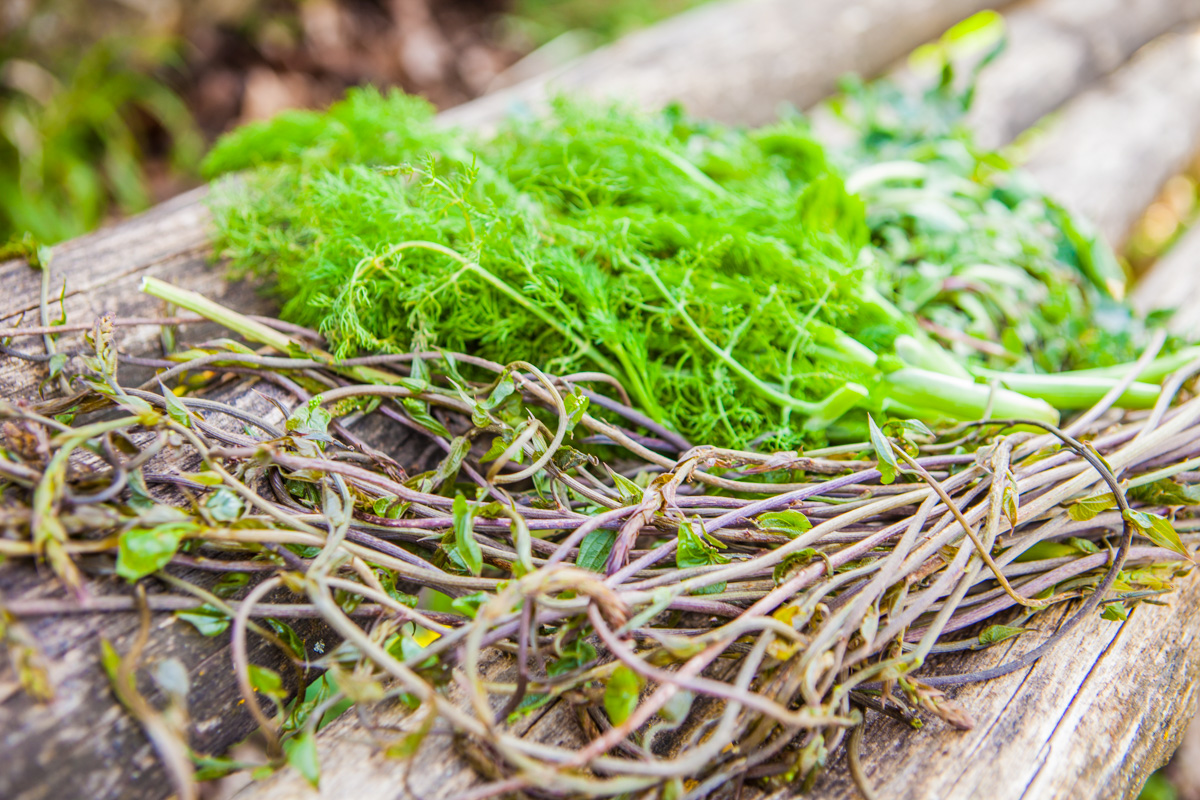The Hunt for Wild Asparagus
Sparacogne, bumascitti, viterbi, asparagi selvatici; there are many Sicilian names and varieties of this wild springtime delicacy. From March through May you will find it served in pastas, risottos, frittatas, even on pizzas. Fortunately, when the season arrives, we have several expert foraging friends who know where to find this beloved spring vegetable – wild asparagus.
We begin with a hike in the mountains of Malvagna, guided by Carmelo and Debbie. This dramatic, rugged landscape with snow-capped Mount Etna in the distance was a kind of playground for Carmelo growing up. He seems to know every twist of the trail like the back of his hand. He may be in his 70’s but he climbs so agilely up the rocky hillsides it’s challenging to keep up with him. I hear a faint sound of bells and spot a herd of goats grazing just off the trail ahead. They have the same idea we do on this day; find wild edible greens.
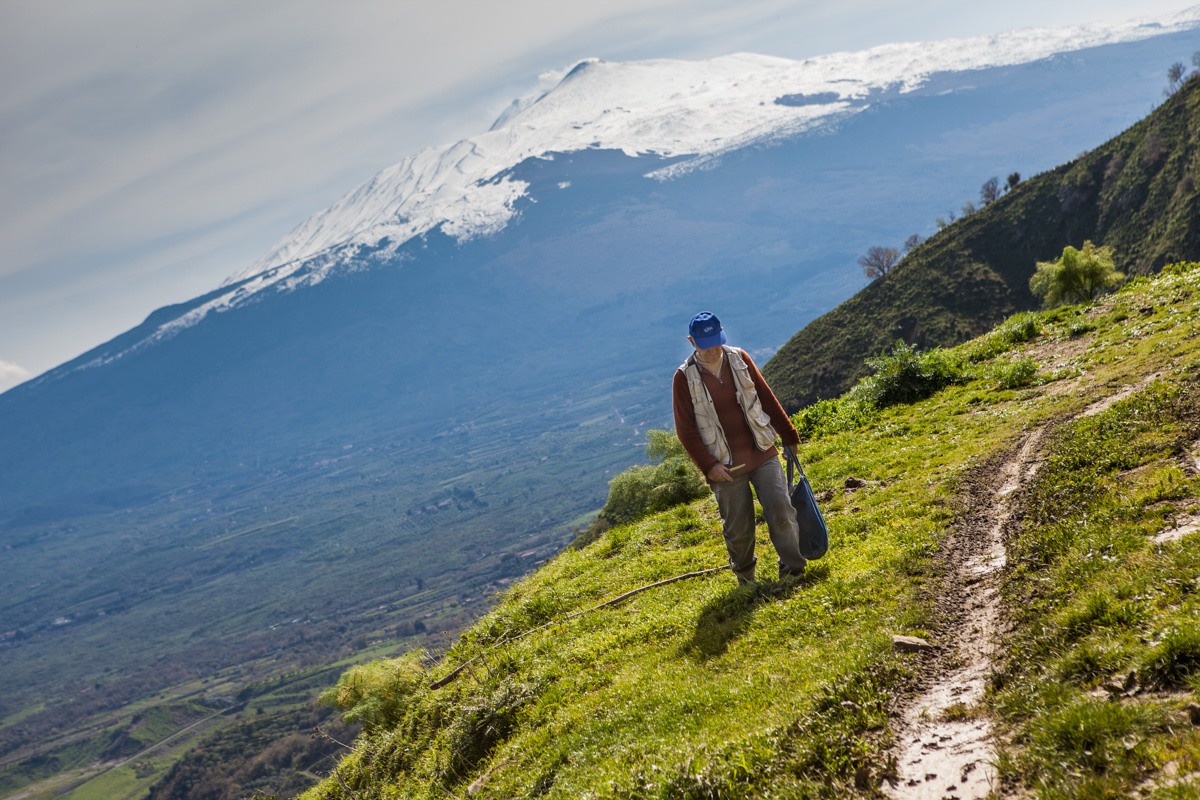
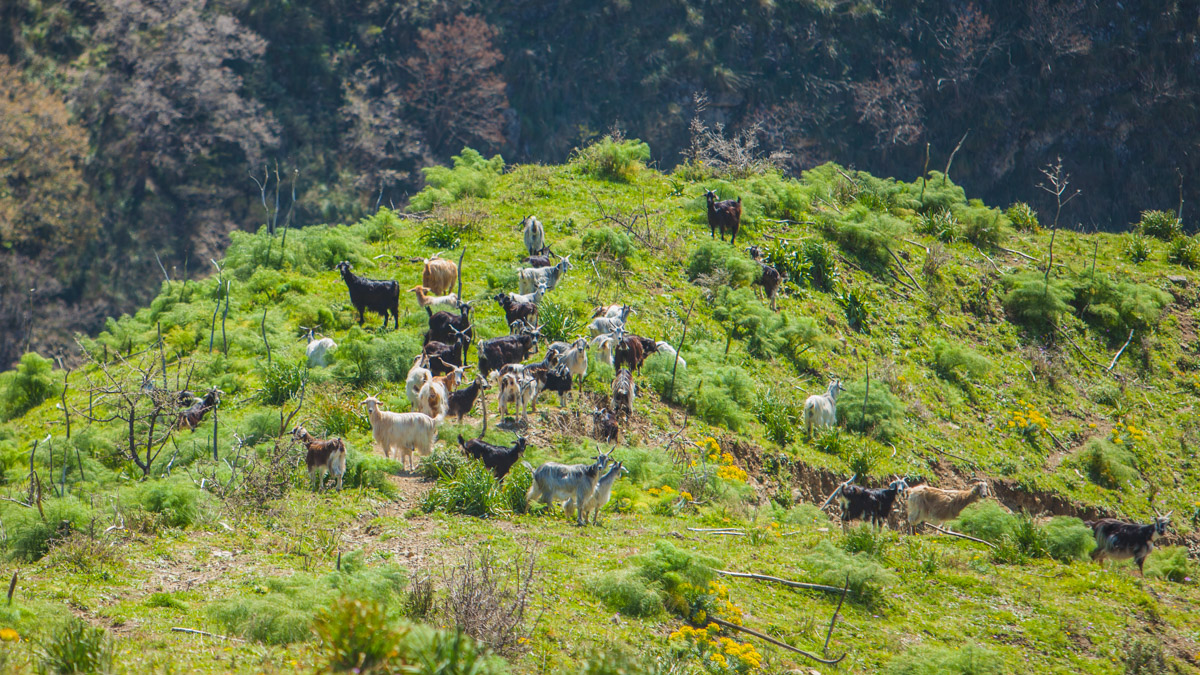
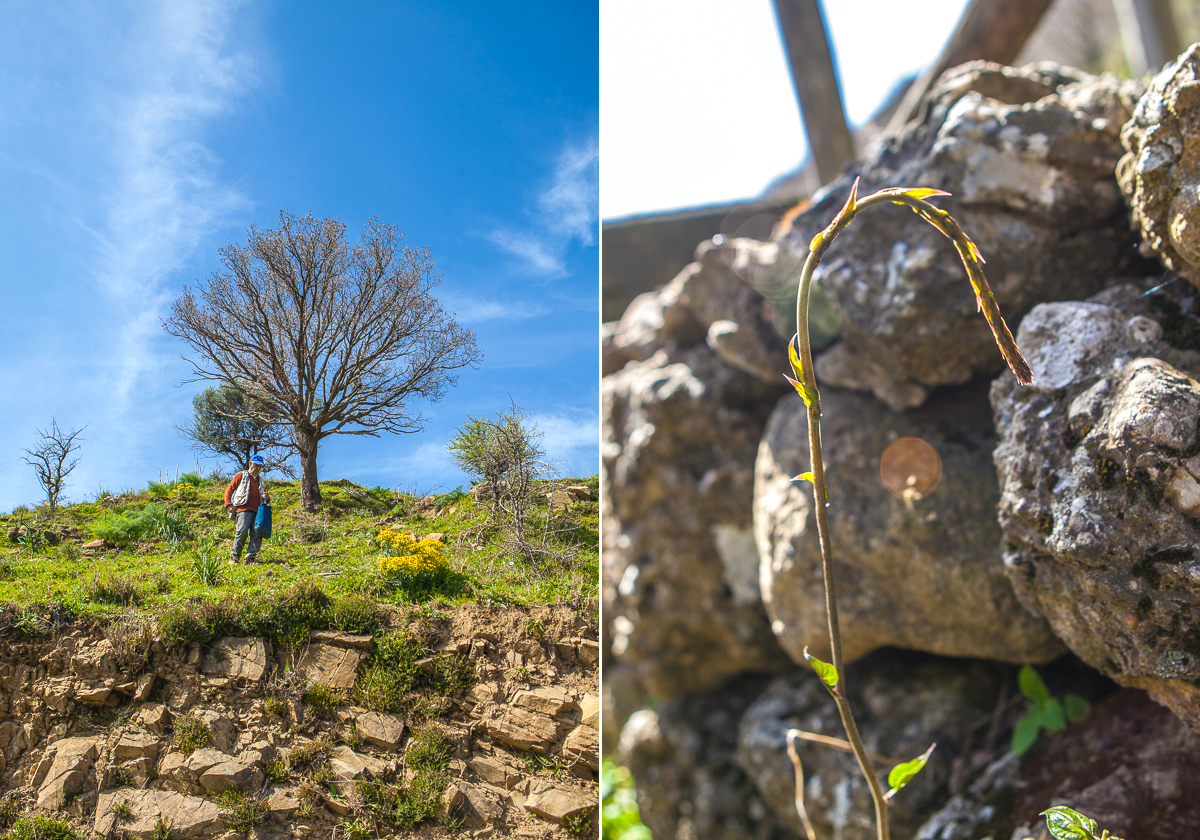
I watch as Carmelo climbs a brush covered slope with a fresh mountain spring gurgling down one side. He quickly finds asparagus, wild fennel, cicoria, and coscia i vecchia (which means old lady’s legs in Sicilian). Thought it’s too early to pick them, Debbie also points out wild artichoke plants. While I struggle to spot the long spindly asparagus stalks among this massive variety of scrubby green plant life, Carmelo and Debbie have already filled their large cloth sack with greens. When we stop for a picnic lunch Carmelo dumps out the day’s bounty on a tarp to teach me about each kind of wild green; how to clean and prepare it for cooking.
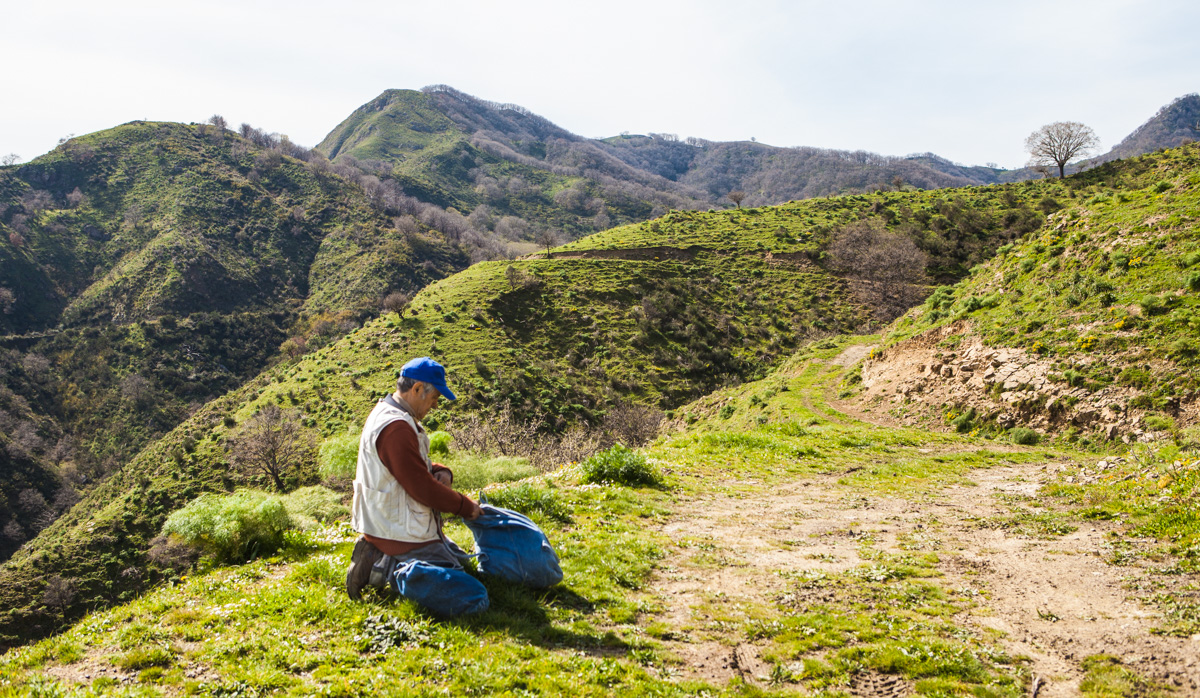
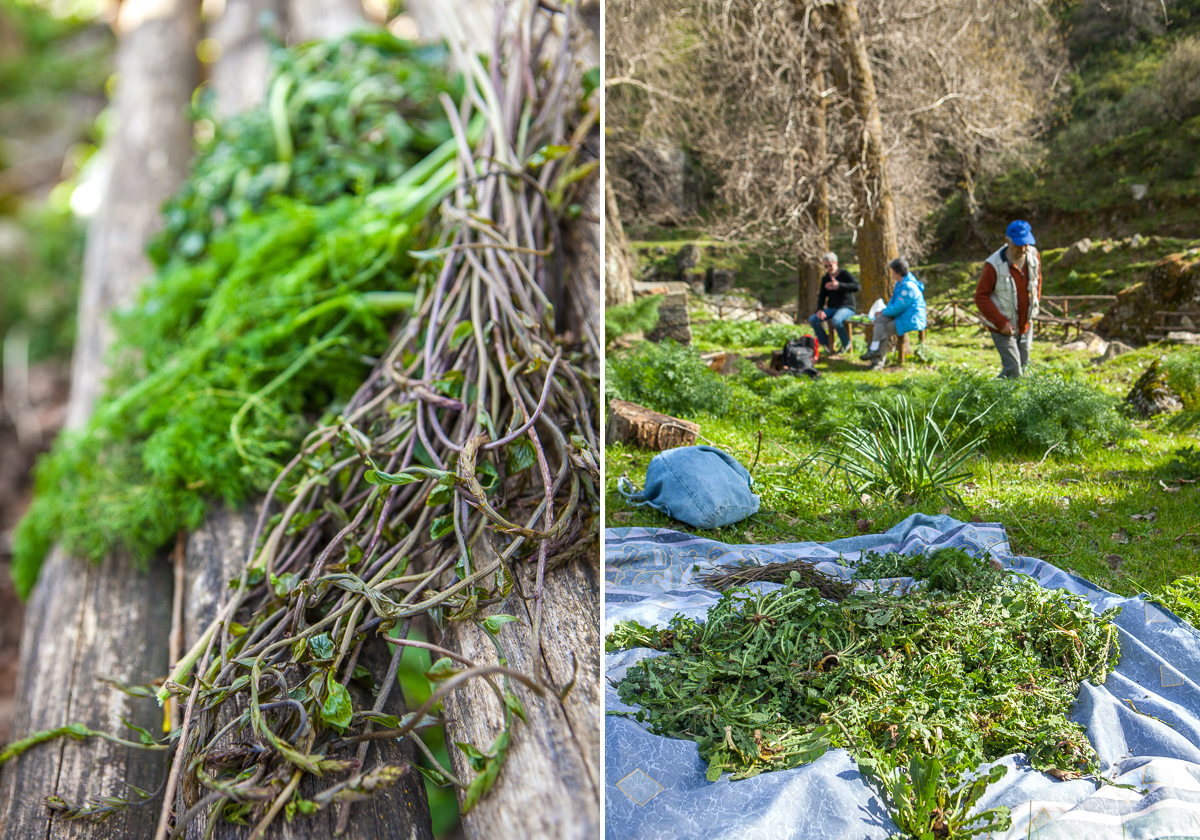
A few months later another friend, Nino, announces that he’s picking asparagus in the morning and we should join him in Randazzo at San Giorgio Il Drago that night to eat it. The first time I met Nino was at a summer dinner and he was cleaning wild mushrooms he had collected, getting ready to sauté them with garlic and olive oil for the party. From wild asparagus to fine homemade grappas, Nino also in his 70’s, is a wealth of knowledge when it comes to local, traditional foods and culture.
We arrive that evening at San Giorgio Il Drago and the chef, Paula, already has Nino’s asparagus (a variety called bumascitti) simmering in a pot of salted water. The first dish she makes are asparagus fritters; slightly bitter, soft warm bites that melt in our mouths. Next comes the freshly made pasta with asparagus and a simple sauce of olive oil and garlic. A hush comes over the table as everyone begins to savor this dish. It’s so perfect that no one wants another course; which if you’ve been invited to lunch or dinner with Sicilians, I can tell you is quite rare.
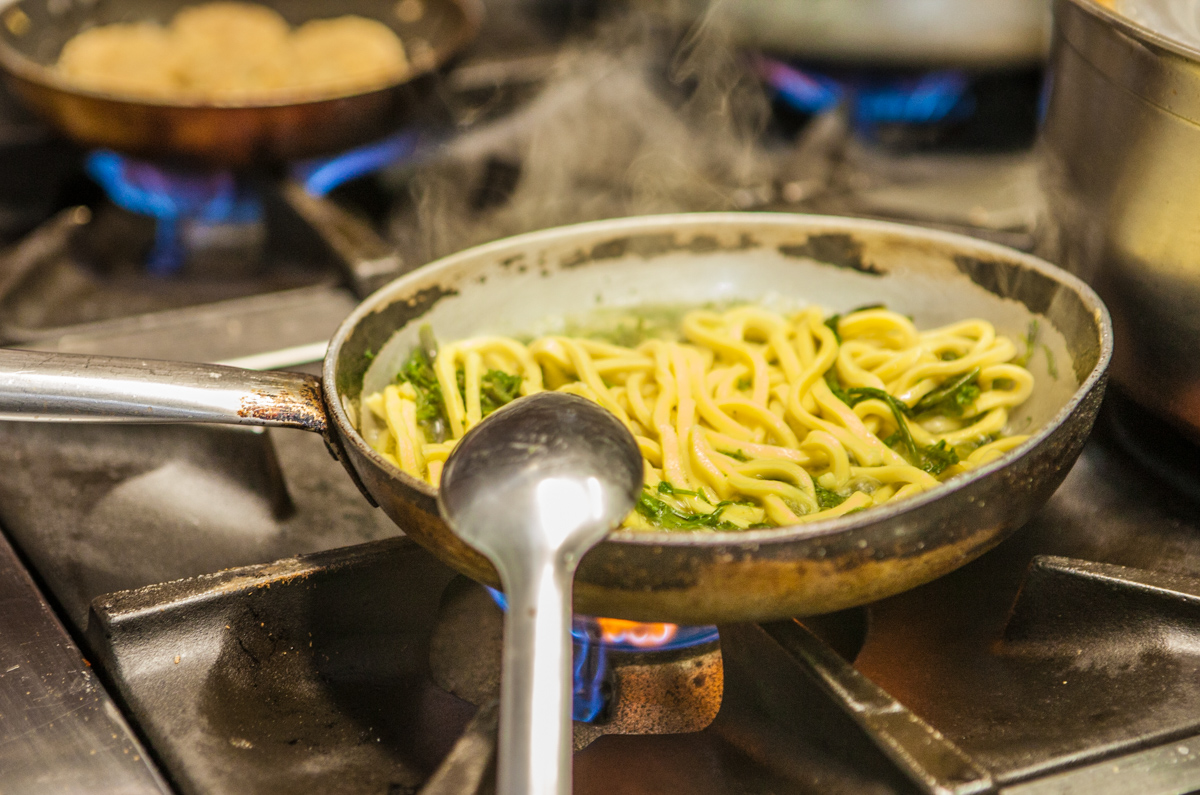
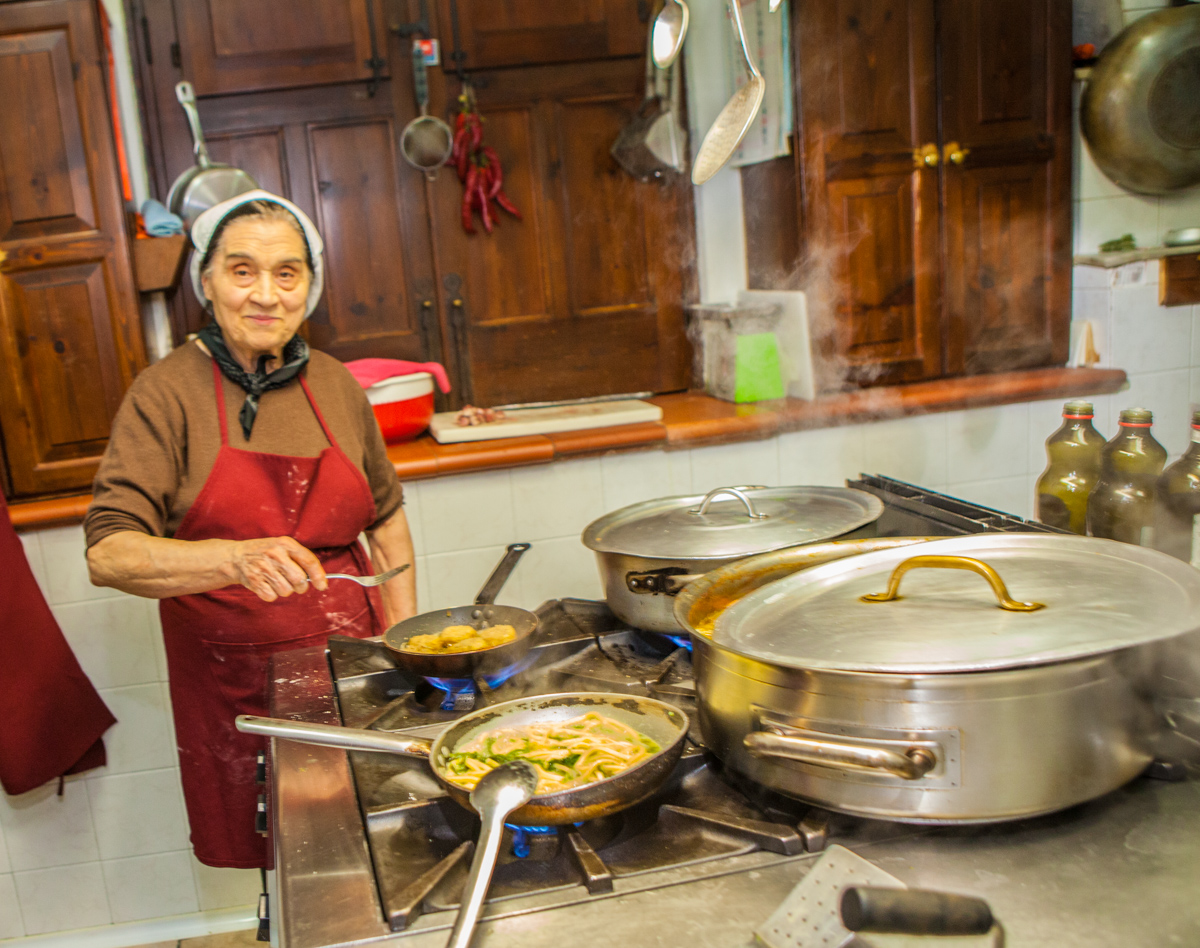
The final stop of my wild asparagus journey ends with our friend Santo; another master forager who worked for the Etna forest service for over twenty-five years. He’s a man who’s profound love and insight of the Etna territory, and all things that grow in it, is infectious. Now that he’s retired, he still spends many of his days on excursions around Etna and one of his favorite activities is collecting wild foods and cooking with them. He arrives at our door with a gift, as he has on countless occasions; this time with two kinds of wild asparagus he collected that morning.
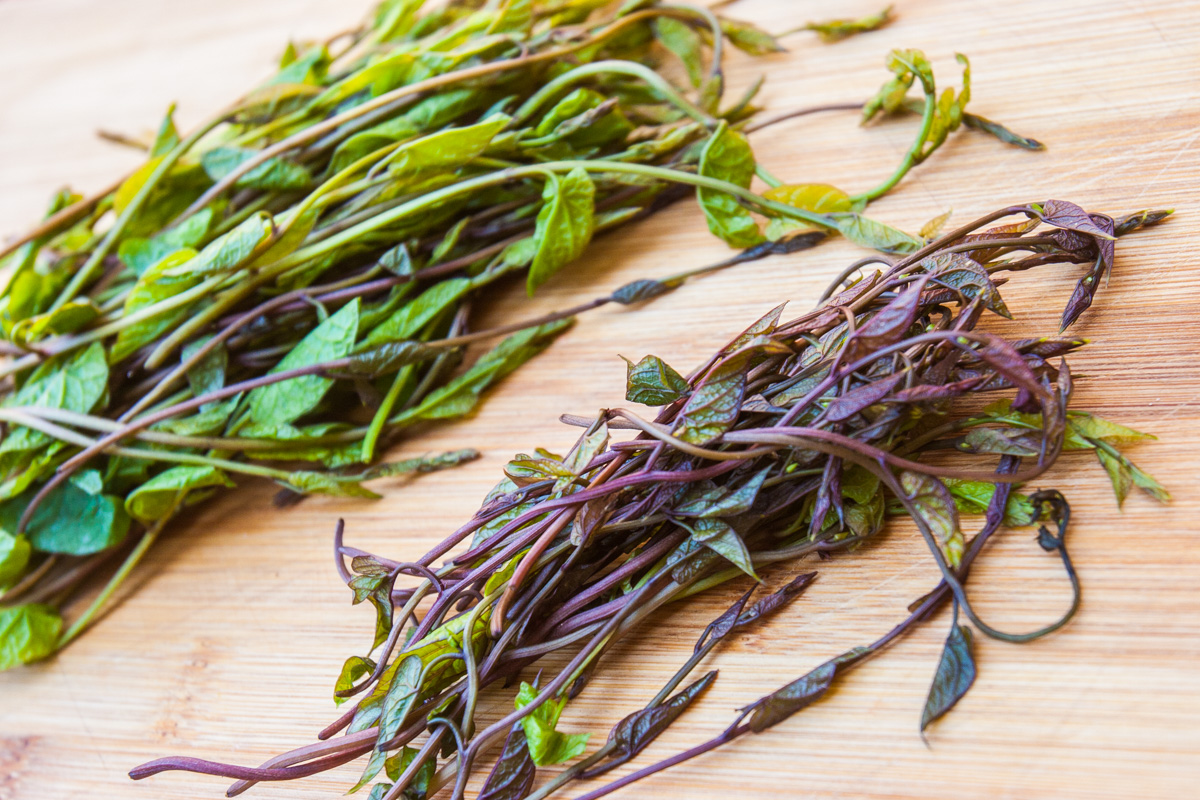
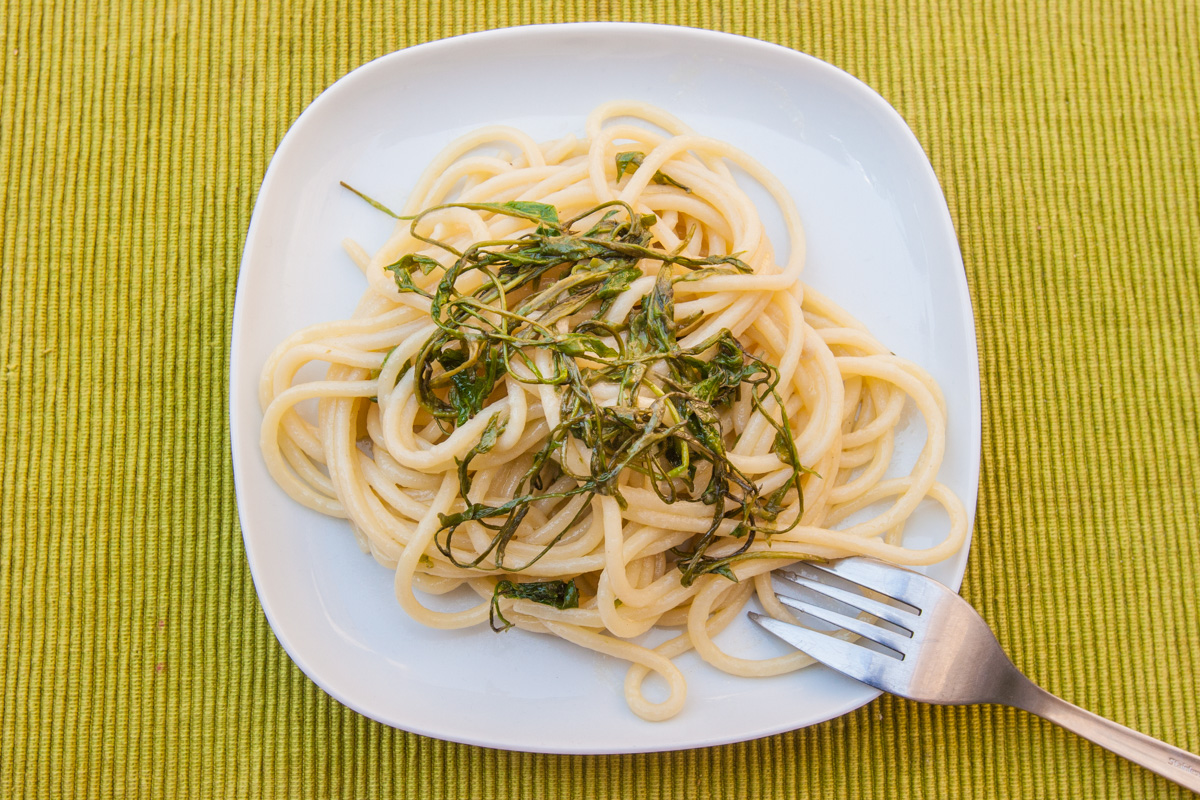
Pasta with Wild Asparagus
250 grams (8 oz) of pasta
a bunch of wild asparagus
1 clove of garlic
extra virgin olive oil
salt
pepper
Pinch any woody bottom part of the asparagus off and use just the tender parts of the stalks.
Wash them in cold water.
In a large skillet add plenty of oil and a clove of garlic and soften it.
Add the asparagus and some salt and cook over medium heat, stirring occasionally. Cooking time will vary depending on the size and thickness of the asparagus so taste it for doneness.
Cook the pasta al dente in salted water.
Drain and add the noodles with a little liquid from the pasta water into the sautéed asparagus. Toss everything together in the pan for a few minutes.
Add a little pepper and, if you like, serve with a sprinkling of parmigiano reggiano
Buon Appetito!

